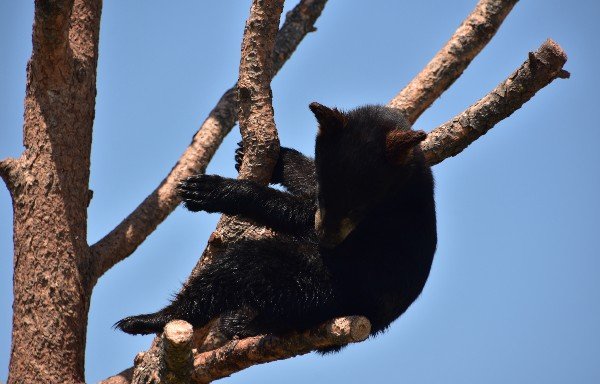Bears are among the most adaptable and resourceful animals in the wild, thriving in a variety of environments depending on their species and location. In Yellowstone National Park, both grizzly bears and black bears roam the vast landscapes, though they tend to favor different habitats—sometimes with surprising overlaps. Whether you’re an avid wildlife enthusiast or a casual visitor, learning about their habitats, diets, and the best strategies for spotting them can make for an unforgettable experience.
Where Do Bears Live? A Look at Their Unique Habitats
Black bears, the most widely distributed bear species in North America, primarily thrive in dense forests rich in nut- and fruit-producing trees. These areas provide the perfect combination of food, shelter, and safety. They also frequent wetlands and lowlands, which offer a steady supply of succulent vegetation, while nearby streams and pools serve as crucial water sources.
For young black bears, trees play an essential role in survival. Cubs instinctively climb sturdy, old-growth trees, particularly those with wrinkled bark and diameters exceeding 20 inches, for protection from predators. This natural defense strategy makes Yellowstone’s lush forests a haven for these agile climbers.
Grizzly bears, on the other hand, tend to favor open meadows, mountain slopes, and river valleys, where they have ample space to roam and hunt. Their powerful build and longer claws make them less adept climbers than black bears, so they rely more on their strength and endurance to find food and defend their territory.
A Bear’s Feast: The Ultimate Omnivores
Bears are opportunistic omnivores, meaning they’ll eat just about anything they can find. Their diet changes with the seasons and includes:
- Plants and nuts, including roots, berries, pine nuts, and grass
- Insects and small animals, such as ants, termites, rodents, and carrion
- Larger prey, including moose, deer, elk, and fish, especially during salmon runs
- Human food, in areas where human activity is high, makes bear safety a crucial responsibility for visitors
Grizzlies, being larger and stronger, are more likely to hunt big game like moose or elk, whereas black bears tend to rely more on berries, nuts, and small animals. However, both species are known for their incredible ability to locate food—whether by keen smell, patience, or sheer determination.
How to Spot a Bear in Yellowstone
Seeing a bear in the wild is a breathtaking experience, but it requires patience, the right timing, and a bit of luck. Here are some expert bear-spotting tips for Yellowstone visitors:
- Time it right, as bears are most active at dawn and dusk, so plan your outings early in the morning or late in the evening.
- Visit the best locations, such as Lamar Valley and Hayden Valley, two of the park’s most famous bear-watching areas. These locations feature wide open spaces, making it easier to spot bears in their natural habitat.
- Look for movement, as bears often blend into their surroundings. Scan the landscape carefully and watch for activity in grassy meadows, riverbanks, or near berry patches.
- Be patient, as wildlife watching takes time. Many visitors spot bears only after others have seen them first, so keep your eyes open and listen for tips from fellow travelers.
- Use binoculars or a spotting scope for the best experience. Bears should always be observed from a safe distance, at least 100 yards away, for both their safety and yours.
Grizzly vs. Black Bear: How to Tell the Difference
Distinguishing between a grizzly and a black bear isn’t always easy, especially since black bears aren’t always black; they can range from light brown to cinnamon or even blonde. Here’s what to look for:
- Grizzlies have a distinctive shoulder hump, which is actually a massive muscle used for digging and climbing.
- Black bears have a straighter profile, with no pronounced shoulder hump.
- Grizzlies have longer claws, suited for digging, while black bears have shorter, curved claws that help them climb trees.
- Grizzlies are typically larger, though size alone isn’t always a reliable indicator.
Experience Bears Up Close at Yellowstone Bear World
If you want a guaranteed opportunity to see black bears and grizzly bears up close in a safe and natural setting, visit Yellowstone Bear World. Our drive-thru wildlife park allows you to observe these majestic creatures from the comfort of your vehicle. Plus, you can enjoy guided tours, a petting zoo, and amusement rides for a fun-filled adventure.
Call us at (208) 359-9688 or visit us online to plan your visit.






